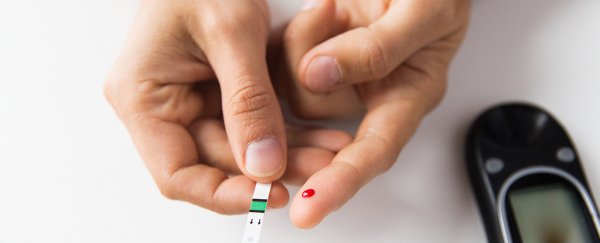A new study by a team from the University of Alabama (UAB) in the US has revealed that the drug verapamil, which is commonly used to treat high blood pressure, chest pain, and irregular heartbeat, could be the key to curing both type 1 and type 2 diabetes in humans.
A few years ago, the team discovered that the progression of diabetes was linked to a pancreatic protein known as TXNIP. They found that diabetes initially develops when high blood pressure causes the pancreas to produce too much TXNIP, which sits inside a pancreatic cell known as the beta cell. Beta cells are found in regions of the pancreas called the islets of Langerhan, and are responsible for producing the insulin the body needs to regulate blood sugar levels.
While scientists have known for many years that a decrease in beta cells can cause type 1 and 2 diabetes, they couldn't figure out what was killing them off. The UAB team was finally able to pinpoint the cause - when too much TXNIP is being produced in the pancreas, it actively kills off the beta cells. This means the body can't produce enough insulin, which leads to the progression of diabetes.
Now, the UAB team has discovered that the drug verapamil actually lowers the levels of TXNIP inside pancreatic beta cells - so much so, that when administered to diabetic mouse models, the drug completely eradicated the disease.
"We have previously shown that verapamil can prevent diabetes and even reverse the disease in mouse models and reduce TXNIP in human islet beta cells, suggesting that it may have beneficial effects in humans as well," lead researcher and director of UAB's Comprehensive Diabetes Centre, Anath Shalev, said in a press release. "That is a proof-of-concept that, by lowering TXNIP, even in the context of the worst diabetes, we have beneficial effects. There is currently no treatment available that targets diabetes in this way."
The team has received over $2 million in funding, which has allowed them to organise a human trial with the drug, starting next year. The trial will involve 52 participants between the ages of 19 and 45, who have been diagnosed with type 1 diabetes within the last three months. Each of the participants will either receive verapamil or a placebo over a 12-month period, while continuing with their regular insulin pump treatments. They will also be given a glucose monitoring system that allows them to check their blood sugar levels 24 hours a day.
"Currently, we can prescribe external insulin and other medications to lower blood sugar; but we have no way to stop the destruction of beta cells, and the disease continues to get worse," said one of the team, professor of medicine at UAB, Fernando Ovalle. "If verapamil works in humans, it would be a truly revolutionary development in a disease affecting more people each year to the tune of billions of dollars annually."
The team says one of the most promising aspects of verapamil's potential as a diabetes treatment is that unlike other diabetes drugs that are either currently being trialled, verapamil has already been on the market for the past 30 years, and doesn't cause any severe side effects. It's hoped that in the human trials, they will see the drug reduce TXNIP levels so significantly that the patients will experience a resurgence of their pancreatic beta cells and a return to normal levels of insulin production.
"We want to find new drugs - different from any current diabetes treatments - that can help halt the growing, worldwide epidemic of diabetes and improve the lives of those affected by this disease," said Shalev. "Finally, we have reason to believe that we are on the right track."

Source: The University of Alabama
